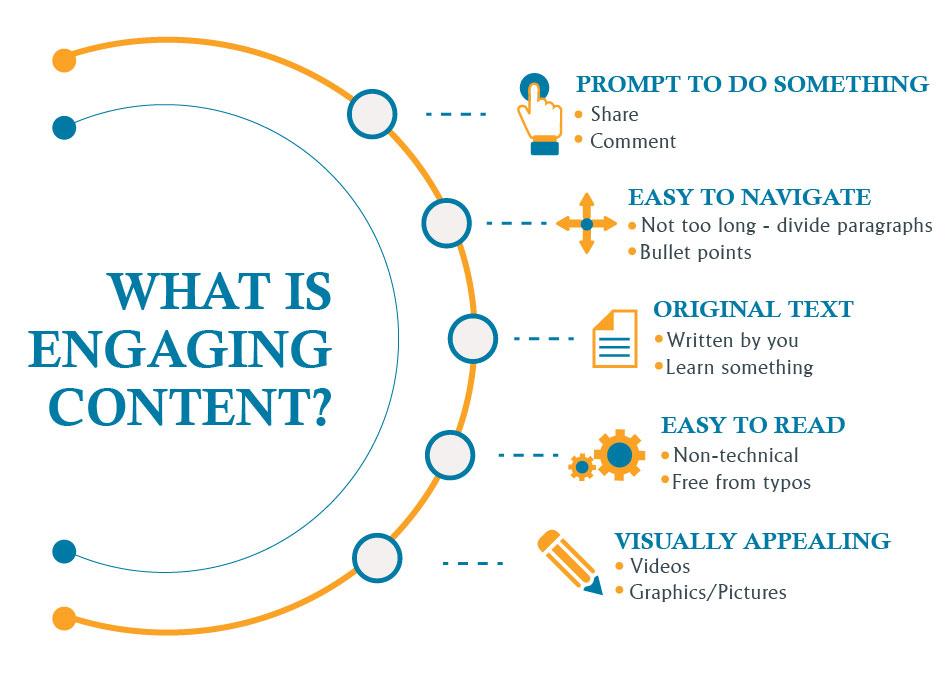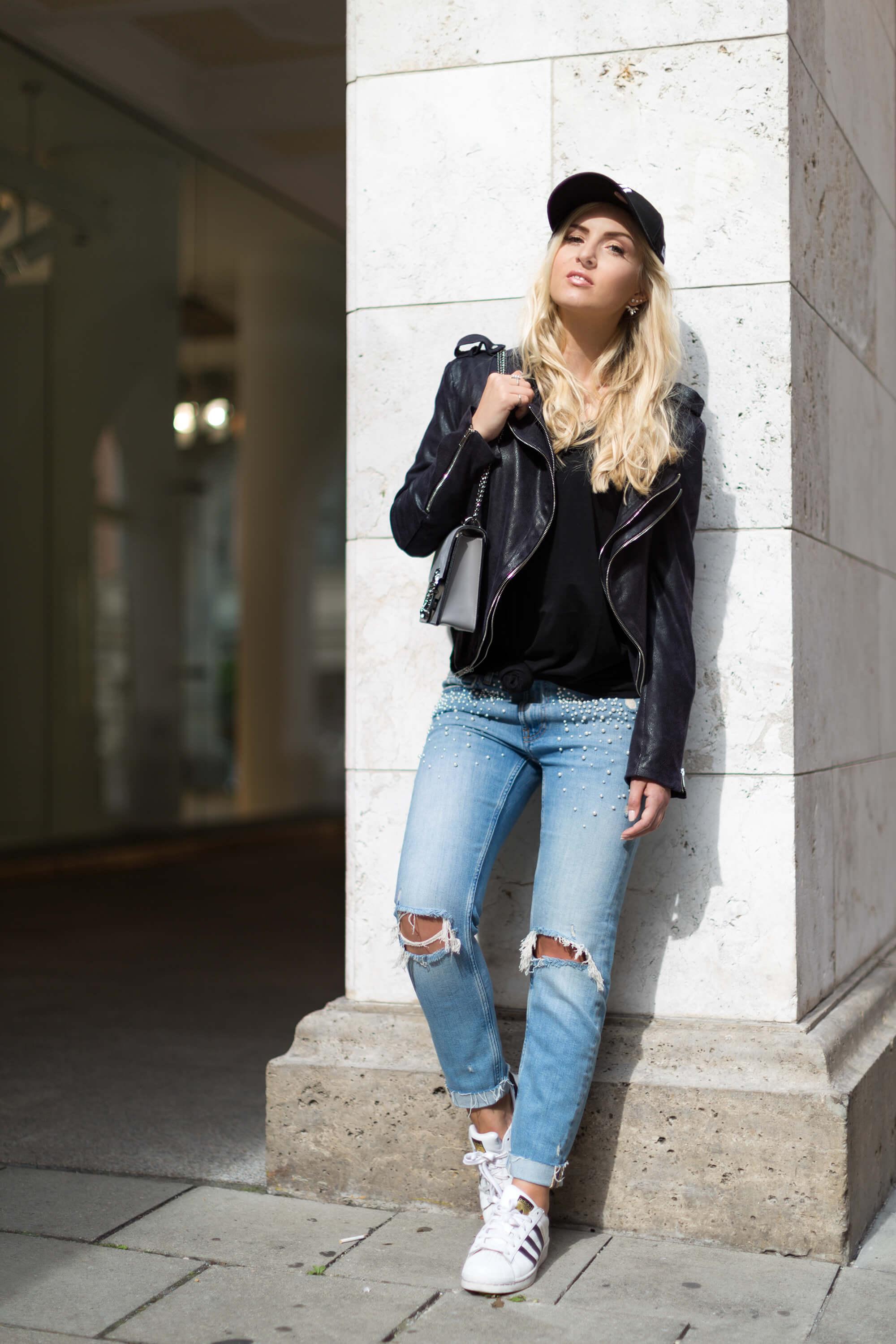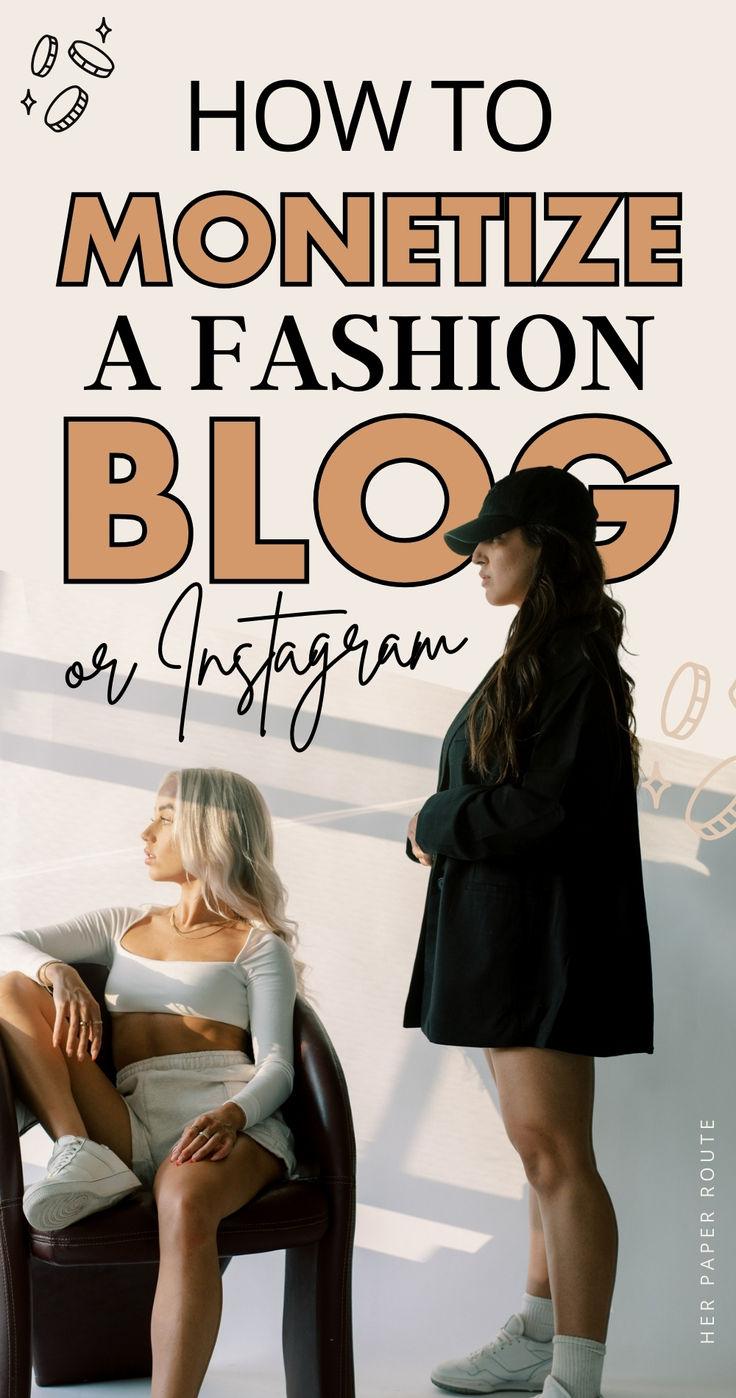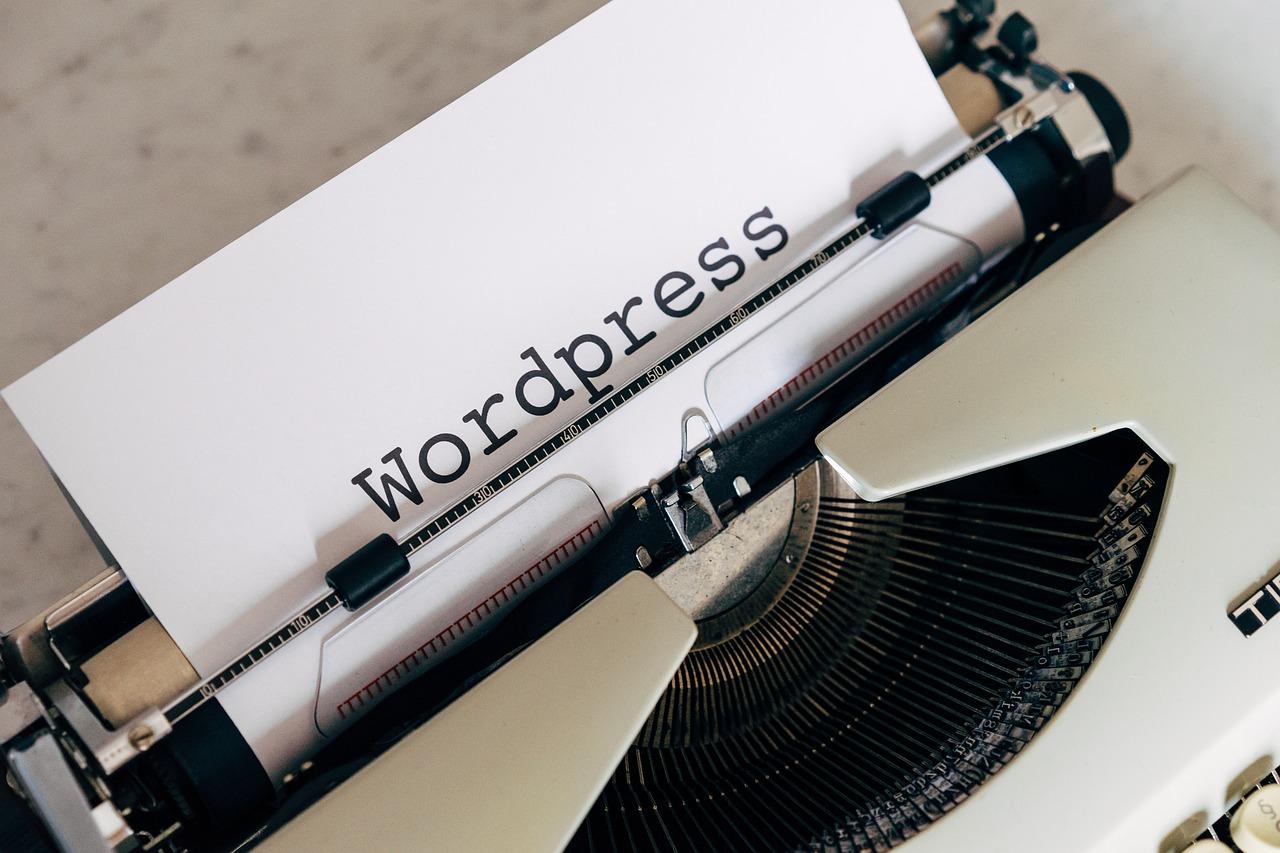Are you ready to share your unique style with the world? Starting a fashion blog is easier than you think! From choosing a catchy name to curating your first post, we’ll guide you through every step. Let’s turn your passion into a vibrant online presence!
How to Start a Fashion Blog: Your Step-by-Step Guide
Are you passionate about fashion and dreaming of sharing your unique style with the world? Starting a fashion blog could be your perfect outlet! In today’s digital age, blogging not only allows you to express your creativity and showcase your personal flair, but it can also connect you with like-minded individuals and even open up exciting career opportunities. Whether you’re a seasoned fashionista or just beginning to explore your style, this step-by-step guide is here to help you navigate the world of fashion blogging. From choosing the right platform to finding your niche and building an audience, we’ll cover everything you need to know to launch your blog with confidence. So, grab your favorite cup of coffee, and let’s dive into the fabulous journey of starting your very own fashion blog!
Choosing Your Niche and Defining Your Unique Style
One of the most exciting aspects of starting a fashion blog is the opportunity to carve out your unique space in the vast universe of style and trends. To make your mark, it’s essential to choose a niche that resonates with you and showcases your personality. Think about what aspects of fashion truly inspire you. Are you drawn to sustainable fashion, street style, luxury brands, or perhaps vintage finds? Identifying this focus will not only help you attract a specific audience but also provide direction for your content.
As you ponder your niche, consider these questions:
- What fashion trends excite you the most?
- Who is your target audience?
- What unique perspective can you offer?
- How will you stand out from other bloggers?
Once you’ve settled on a niche, it’s time to define your unique style. This is where your personality shines through your blog. Your style should reflect your tastes and experiences, transforming your blog into a space that feels authentically you. Consider how you can blend your interests with the trends in your niche. For example, if you love minimalist fashion, think about how you can incorporate lifestyle tips that resonate with that aesthetic.
To aid in this process, creating a mood board can be incredibly helpful. Use platforms like Pinterest or Canva to gather images, color palettes, and quotes that inspire you. This visual representation will not only guide your content but also ensure consistency in your blog’s theme and tone.
| Element | Description |
|---|---|
| Niche | Focus on a specific area of fashion that excites you. |
| Unique Style | Your personal touch that sets your blog apart. |
| Mood Board | Visual inspiration that guides your content creation. |
Remember, your niche and style will evolve as you grow as a blogger. Stay open to new ideas and trends, and don’t be afraid to pivot if something feels off. The most successful fashion bloggers are those who are true to themselves and their vision, allowing their authenticity to forge a deeper connection with their audience. Embrace this journey, and let your unique voice be heard in the fashion world!
Crafting a Memorable Blog Name and Domain
Choosing the right name for your blog is one of the most crucial steps in establishing your online presence. A memorable blog name should reflect your unique voice and the essence of what you’ll be sharing. Here are some tips to help you brainstorm:
- Keep it Short and Sweet: Aim for something that’s easy to remember, spell, and type.
- Be Descriptive: Incorporate keywords related to fashion, style, or your niche.
- Stay Unique: Check existing blogs and social media handles to ensure your name stands out.
- Consider Future Growth: Choose a name that won’t limit you as your blog evolves.
Once you have a shortlist of potential names, it’s time to check domain availability. A matching domain is essential for brand consistency. Here’s how to approach this:
| Action | Description |
|---|---|
| Domain Search | Use a domain registration site to see if your desired name is available. |
| Consider Alternatives | If taken, try different extensions like .net, .fashion, or .blog. |
| Social Media Check | Ensure the same name is available across platforms for branding. |
After you secure your domain, think about how to make it memorable. This is where creativity comes into play. You can play with:
- Alliteration: Names like “Fashion Finds” or “Style Stories” are catchy and fun.
- Puns: A playful twist can add personality, like “Sew It Goes” for a sewing blog.
- Personal Touch: Incorporate your name or nickname for a personal connection.
Lastly, remember that your blog name and domain are the first things people will encounter. Make a lasting impression with something that encapsulates your style and passion for fashion. A great name not only attracts readers but also sets the tone for your entire blogging journey.
Setting Up Your Blog: Platforms and Design Tips
Choosing the Right Platform
When starting your fashion blog, selecting the right platform is crucial. Here are some popular options:
- WordPress.org: Offers full control over your site and is highly customizable with plugins and themes.
- Blogger: A user-friendly option for beginners, but less flexible in design and functionality.
- Wix: Features an intuitive drag-and-drop interface, ideal for those who want to build a visually appealing site without coding.
- Squarespace: Known for stunning templates, it’s perfect for showcasing your fashion photography.
Consider your technical skills and the level of customization you desire when making your choice.
Design Tips for Your Blog
Once you’ve selected your platform, it’s time to focus on design. Your blog should reflect your personal style and resonate with your target audience. Here are some tips to keep in mind:
- Choose a clean layout: A clutter-free design will help your readers navigate effortlessly.
- Utilize high-quality images: Fashion is a visual medium, so ensure your photos are sharp and well-lit.
- Pick a cohesive color palette: Consistency in colors enhances the overall aesthetic of your blog.
- Incorporate your branding: Use logos, fonts, and styles that reflect your unique fashion identity.
Creating an Engaging User Experience
Your blog’s design should not only be attractive but also functional. Consider these elements to enhance user experience:
| Element | Importance |
|---|---|
| Navigation | Helps users find content quickly. |
| Responsive Design | Ensures your blog looks great on all devices. |
| Fast Loading Speed | Keeps visitors engaged and reduces bounce rates. |
| Social Media Integration | Encourages sharing and interaction with your audience. |
Integrating these elements will not only improve aesthetics but also encourage visitors to stay longer and engage with your content.

Creating Engaging Content That Resonates with Your Audience
Creating content that genuinely resonates with your audience is crucial for the success of your fashion blog. It’s not just about showcasing the latest trends but about connecting with your readers on a personal level. Here’s how to make your content engaging and relatable.
Know Your Audience:
Understanding who your readers are is the first step in crafting appealing content. Consider their age, style preferences, and lifestyle. You can gather insights through:
- Surveys and polls on social media
- Engaging with comments on your posts
- Analyzing audience demographics using tools like Google Analytics
Tell a Story:
People love stories, especially in the fashion world where personal experiences can inspire others. Share your journey of discovering your style or the challenges you faced while starting your blog. Authentic storytelling not only makes your content relatable but also builds a connection with your audience.
Use Eye-Catching Visuals:
Fashion is all about visuals. Incorporate high-quality images, infographics, and videos that complement your writing. A well-placed image can evoke emotions and make your readers stay longer on your page. Consider using:
- Outfit-of-the-day photos
- Behind-the-scenes videos of photo shoots
- Color palettes and mood boards
Engage with Your Readers:
Encourage interaction by asking questions at the end of your posts or inviting readers to share their thoughts and experiences. Responding to comments creates a community feel, making your blog a go-to space for fashion enthusiasts.
Consistency is Key:
Keep your content fresh and consistent. Regular updates not only boost your SEO but also keep your audience eager for more. Develop a content calendar to plan your posts, ensuring you cover a variety of topics that will interest your readers.
| Content Type | Engagement Strategy |
|---|---|
| Blog Posts | Use storytelling and personal anecdotes |
| Social Media | Engage with polls and questions |
| Videos | Show behind-the-scenes content |
| Newsletters | Share exclusive fashion tips and trends |
By focusing on these elements, you can create content that not only informs but also engages your audience, making your fashion blog a place they will return to again and again.

Building a Social Media Presence to Boost Your Blog
Building a robust social media presence is essential for any fashion blog looking to gain traction. Your blog deserves to shine, and social media is the perfect stage. Here are some effective strategies to elevate your blog’s visibility and engagement.
Identify Your Target Audience
Before diving into social media marketing, it’s crucial to know who you’re speaking to. Define your target audience by considering:
- Demographics: Age, gender, location.
- Interests: Fashion trends, sustainability, luxury brands.
- Platforms: Which social media channels do they frequent?
Choose the Right Platforms
Not all social media platforms will suit your fashion blog. Focus on the ones that resonate with your audience. For fashion, visually-driven platforms like Instagram and Pinterest are often best. Here’s a quick overview:
| Platform | Strengths |
|---|---|
| Visual storytelling, influencer collaborations | |
| Long-term traffic, niche audience | |
| TikTok | Trend-driven, engaging video content |
| Community building, event promotion |
Create Engaging Content
Content is king, but engagement is queen. Focus on crafting content that not only showcases your style but also invites interaction. Consider the following:
- Outfit Inspirations: Share looks for different occasions.
- Behind-the-Scenes: Show your process, from styling to shooting.
- Trends and Tips: Offer advice on how to wear the latest fashions.
Engage with Your Audience
Social media is a two-way street. Respond to comments, ask for feedback, and engage in conversations to build a loyal community. Remember to:
- Host Q&A Sessions: Answer style questions from your followers.
- Run Contests or Giveaways: Encourage sharing and tagging.
- Collaborate with Influencers: Partner with others in your niche for greater reach.
Analyze and Adjust
keep an eye on your analytics to understand what works and what doesn’t. Check metrics like engagement rates, follower growth, and post reach to inform your strategy. Adjust your content and engagement tactics based on these insights for continual growth.

Networking with Other Bloggers and Influencers
in the fashion industry is a powerful way to grow your audience and elevate your blog. Building genuine relationships can lead to collaboration opportunities, guest posting, and even brand partnerships that can enhance your credibility and reach. Here are some effective strategies to connect with your peers:
- Engage on Social Media: One of the easiest ways to start networking is by actively engaging with fashion bloggers and influencers on platforms like Instagram, Twitter, and Pinterest. Comment on their posts, share their content, and don’t hesitate to slide into their DMs with a compliment or a question. Genuine interactions can lead to meaningful connections.
- Attend Fashion Events: Whether it’s a local fashion show, a launch party, or a blogger meet-up, attending events can provide you with valuable face-to-face networking opportunities. Bring business cards and be prepared to chat about your blog and interests. Make a lasting impression by being approachable and enthusiastic!
- Join Blogging Communities: Online platforms such as Facebook groups, forums, or networking sites dedicated to fashion blogging can be treasure troves of connection. These communities often share tips, collaborate on projects, and even host events where you can meet fellow bloggers.
Collaborations can be a game changer in the blogging world. Consider reaching out to fellow bloggers for joint projects, such as:
| Collaboration Type | Description |
|---|---|
| Guest Blogging | Write a post for each other’s blogs, exposing both audiences to new content. |
| Social Media Takeovers | Take over each other’s social media accounts for a day to share your unique perspective. |
| Stylish Challenges | Organize a fashion challenge and encourage followers to participate, tagging both bloggers. |
Don’t overlook the potential of influencer collaborations. Brands often seek to work with both established and emerging voices. If you can create authentic connections with influencers, you may find opportunities to collaborate on sponsored posts, product reviews, or even exclusive brand events. Reach out to them, pitch your ideas, and showcase how your fashion blog aligns with their brand values.
remember that networking is a two-way street. Be supportive of others, share their content, and celebrate their successes. This builds trust and rapport, making others more likely to reciprocate. Keep your interactions genuine and professional, and your network will grow stronger, helping you to reach new heights in your blogging journey.

Mastering SEO to Get Your Fashion Blog Noticed
To make your fashion blog stand out in the crowded digital space, implementing effective SEO strategies is crucial. Start by focusing on keyword research; this ensures that your content resonates with what your potential readers are searching for. Use tools like Google Keyword Planner or Ubersuggest to discover trending keywords related to fashion, style tips, and outfit ideas. Incorporate these keywords naturally throughout your posts, especially in headings, subheadings, and image alt texts.
Another essential aspect of SEO is optimizing your blog’s structure. Ensure your URLs are clean and descriptive. For example, instead of a lengthy URL that looks like this: www.yourfashionblog.com/?p=123, use something more readable, like www.yourfashionblog.com/summer-outfit-ideas. This not only helps with SEO but also improves user experience, making it easier for readers to navigate your blog.
Content quality cannot be overlooked. Create engaging, high-quality posts that provide value, whether it’s through how-to guides, fashion advice, or personal stories. Consider the following tips:
- Use captivating images: High-resolution images grab attention and keep readers engaged.
- Write compelling meta descriptions: These act as your page’s advertisement in search results, so make them intriguing.
- Update regularly: Keep your content fresh to encourage return visits and improve SEO rankings.
Link building is another powerful SEO strategy. Collaborate with other bloggers or brands to create guest posts, which can help you gain backlinks. Backlinks from reputable sources boost your blog’s authority and visibility in search engine results. Additionally, don’t forget to link to your own content within your posts to keep readers engaged across your site.
| SEO Strategy | Description |
|---|---|
| Keyword Research | Identify trending keywords to align with your audience’s interests. |
| Optimize URLs | Keep URLs simple and descriptive for better navigation. |
| Quality Content | Create engaging posts that provide value to readers. |
| Link Building | Develop backlinks through collaborations and internal linking. |
leverage social media to amplify your reach. Share your blog posts across platforms like Instagram, Pinterest, and Twitter, which are particularly effective for fashion content. Use relevant hashtags and engage with your audience to drive traffic back to your blog. By mastering these SEO techniques, you’ll enhance your visibility, attract a loyal readership, and set your fashion blog up for success.

Monetizing Your Blog: Exploring Revenue Opportunities
Once you’ve established your fashion blog and attracted a steady stream of visitors, it’s time to think about how to turn your passion into profit. There are numerous avenues available for monetization, and a combination of them can maximize your earnings.
Affiliate Marketing
One of the most popular ways to monetize your blog is through affiliate marketing. This involves promoting products and earning a commission for every sale made through your referral link. Consider the following tips:
- Choose the right partners: Align with brands that resonate with your audience.
- Be authentic: Only promote products you believe in.
- Integrate naturally: Embed affiliate links within your content seamlessly.
Sponsored Posts
Another lucrative option is collaborating with brands for sponsored content. This can include blog posts, social media shares, or even video content that features their products. Keep these points in mind:
- Set clear guidelines: Define what you’re willing to promote and for how much.
- Maintain transparency: Always disclose sponsored posts to your audience.
- Focus on quality: Ensure that sponsored posts align with your blog’s theme and quality standards.
Creating Digital Products
Why not create your own digital products? This can include e-books, style guides, or online courses related to fashion. Here’s how to get started:
- Identify your expertise: What unique insights can you offer your audience?
- Market research: Gauge interest by surveying your readers.
- Promotion: Use your blog and social media to promote your product launch.
Advertising
Displaying ads on your blog can be an effortless way to generate revenue. Consider these options:
| Ad Type | Description |
|---|---|
| Google AdSense | Place ads that automatically match your content. |
| Direct Ad Sales | Sell ad space directly to brands for a fixed fee. |
| Sponsored Banners | Feature banner ads for brands in your niche. |
Memberships and Subscriptions
If you have a loyal readership, consider offering a membership or subscription model. You can provide exclusive content or perks for paying subscribers. Think about:
- Exclusive content: Offer in-depth articles, videos, or personal styling sessions.
- Community access: Create a members-only section for fashion discussions.
- Tiered memberships: Offer different levels of access at various price points.

Staying Consistent and Adapting to Trends
To thrive in the fashion blogging world, it’s crucial to maintain a steady output while embracing the ever-evolving trends of the industry. Consistency is your best friend; it builds trust and keeps your audience engaged. Aim to create a realistic posting schedule that you can stick to, whether it’s once a week or bi-weekly. Here are some tips to help you stay on track:
- Set a Content Calendar: Plan your posts in advance, aligning them with seasonal trends, holidays, or fashion events.
- Batch Your Content: Consider dedicating specific days to create multiple pieces of content at once. This can be particularly effective for photo shoots or planning blog series.
- Engage with Your Audience: Regularly respond to comments and messages. This not only keeps your readers engaged but can also inspire future content.
While consistency is key, flexibility is equally important. The fashion world is notorious for its rapid changes, and your ability to adapt will set you apart from the competition. Here’s how to stay ahead of the curve:
- Follow Industry Leaders: Subscribe to fashion newsletters, follow influencers on social media, and engage with other bloggers to stay informed about emerging trends.
- Use Analytics Tools: Monitor which posts resonate most with your audience. This data can guide your content strategy, allowing you to pivot when necessary.
- Experiment with Formats: Don’t be afraid to try new styles of content, whether it’s video, podcasts, or interactive stories. Different formats can attract different audiences.
Incorporating trending themes into your posts can greatly enhance your visibility. Here’s a quick table outlining popular trends and how to integrate them into your blog:
| Trend | Integration Ideas |
|---|---|
| Sustainable Fashion | Feature eco-friendly brands and tips for sustainable living. |
| Vintage Revival | Showcase thrift finds and how to style them. |
| Gender-Neutral Styles | Highlight outfits that can be worn by anyone, regardless of gender. |
| Bold Colors and Patterns | Create lookbooks that mix and match vibrant prints. |
Ultimately, the balance between will not only enhance your credibility but also keep your content fresh and exciting. By embedding current trends into your established framework, you create a unique voice that resonates with your audience while staying relevant in a dynamic industry. Embrace both your routine and the unexpected, and watch your fashion blog flourish!

Measuring Success: Tools and Metrics for Growth
To truly gauge the effectiveness of your fashion blog, it’s essential to implement the right tools and metrics. This will allow you to track your progress, understand your audience, and refine your strategies. Here are some key elements to consider:
- Website Analytics: Utilizing tools like Google Analytics is vital. It provides insights into visitor behavior, traffic sources, and engagement metrics. You can monitor which content resonates most with your audience and identify traffic trends.
- Social Media Insights: Platforms such as Instagram and Pinterest have built-in analytics tools that let you track engagement rates, follower growth, and post performance. This information helps you to optimize your social content and posting times.
- Email Marketing Metrics: If you’re building an email list, tracking open rates, click-through rates, and conversion rates will be crucial. Tools like Mailchimp or ConvertKit can help you analyze these metrics effectively.
Moreover, defining success for your blog goes beyond just numbers. Establishing clear objectives will help you to measure growth more holistically. Consider these goals:
| Goal Type | Description | Measurement |
|---|---|---|
| Traffic Growth | Increase the number of visitors to your blog. | Monthly unique visitors |
| Engagement | Encourage reader interaction through comments and shares. | Comments per post, shares on social media |
| Brand Collaborations | Partner with fashion brands for sponsorships and collaborations. | Number of partnerships per quarter |
| Subscriber Growth | Expand your email list for newsletters. | New subscribers per month |
Utilizing these metrics will not only help you to evaluate your blog’s performance but also enable you to adjust your strategies to enhance growth. By regularly reviewing your data, you can identify patterns, capitalize on successful content, and pivot when necessary. Remember, consistency is key; keep measuring, learning, and adapting as you go!
Frequently Asked Questions (FAQ)
Q&A: How to Start a Fashion Blog: Your Step-by-Step Guide
Q: Why should I start a fashion blog?
A: If you have a passion for fashion and love sharing your personal style, starting a fashion blog is an incredible way to express yourself! It not only lets you showcase your creativity but also opens doors to connect with like-minded individuals, brands, and even potential career opportunities in the fashion industry. Plus, it’s a fun way to document your style journey!
Q: What do I need to do first?
A: The first step is to define your niche. Fashion is vast, and honing in on a specific area can help you attract a target audience. Think about what excites you the most—vintage fashion, sustainable styles, streetwear, or maybe high-end couture? Once you’ve got your niche, it’s time to come up with a catchy blog name that reflects your style!
Q: How do I choose the right platform for my blog?
A: Great question! Popular platforms like WordPress, Blogger, and Wix offer user-friendly interfaces for beginners. If you want more customization and control, WordPress.org is a fantastic choice, although it requires a bit of a learning curve. Consider what features are important to you—like ease of use, design options, and SEO tools—when making your choice.
Q: What about design? How can I make my blog visually appealing?
A: Design is key in the fashion world! Choose a clean, chic layout that highlights your content. Use high-quality images, consistent fonts, and a cohesive color palette that reflects your personal style. Don’t forget to optimize your blog for mobile viewing, as many readers will check it out on their phones!
Q: How often should I post?
A: Consistency is crucial! Aim for at least one to two posts per week, but don’t stress too much about quantity. Focus on creating quality content that resonates with your audience. As you grow, you may find your rhythm and post more frequently or even branch out into other forms of content like videos or Instagram stories.
Q: How do I promote my blog and attract readers?
A: Social media is your best friend! Share your blog posts on platforms like Instagram, Pinterest, and Facebook where fashion lovers hang out. Collaborate with other bloggers, engage with your audience, and consider using hashtags to reach a wider audience. Don’t forget SEO—optimize your posts for search engines to help new readers discover your blog!
Q: Can I make money from my fashion blog?
A: Absolutely! Once you start gaining traction, there are several ways to monetize your blog. You can partner with brands for sponsored posts, join affiliate programs, sell your own products, or even explore ad placements. Just remember, focus on building your audience first; monetization will follow as your blog grows!
Q: What should I avoid when starting my fashion blog?
A: One common pitfall is trying to mimic other bloggers too closely. Stay authentic and true to your unique voice—your readers will appreciate your originality! Also, avoid neglecting your blog’s technical aspects like loading speed and mobile responsiveness, as these can significantly impact user experience.
Q: Any final tips for aspiring fashion bloggers?
A: Just dive in and start! Don’t worry about being perfect right away. The more you write and share, the better you’ll become. Keep learning, stay patient, and most importantly, have fun with it. Your passion for fashion will shine through, attracting readers who share your enthusiasm! Happy blogging!
Key Takeaways
And there you have it—your step-by-step guide to launching your very own fashion blog! We’ve covered everything from finding your niche and creating captivating content to building your audience and engaging with your followers.
Now, it’s time to take that leap and turn your fashion dreams into reality. Remember, the journey of blogging is just as important as the destination. Embrace your unique style, share your insights, and connect with others who share your passion for fashion.
Don’t be afraid to experiment, learn as you go, and let your personality shine through each post. The fashion world is vibrant and ever-evolving, and your voice deserves a place in it. So grab your camera, whip up some fabulous outfits, and start sharing your fashion story with the world.
You’ve got this! Now go out there and make your mark—who knows, you might just inspire the next big trend! Happy blogging!




